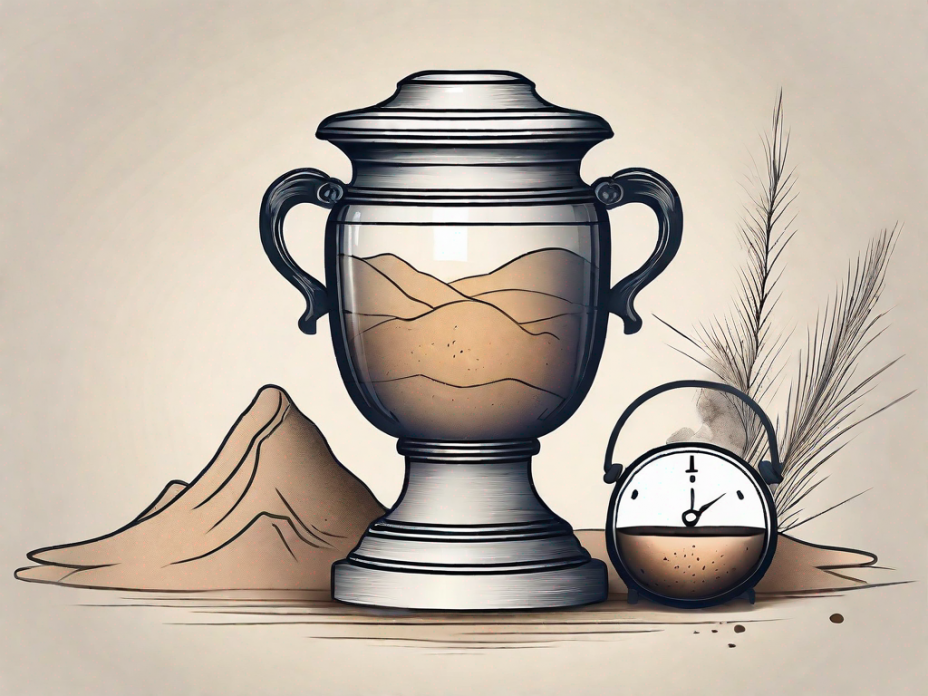Cremation, a sacred and ancient practice, offers a dignified and peaceful way to bid farewell to our departed loved ones. It is a process that is surrounded by curiosity and questions, with one of the most common being, "How long does cremation take?" In this enlightening article, we will explore the various factors that influence the duration of this transformative process, debunking common misconceptions along the way.
Understanding the Cremation Process
The journey of cremation can be divided into three distinct phases: the pre-cremation procedures, the actual cremation, and the post-cremation activities. Let us delve into each phase, shedding light on their significance and how they contribute to the overall time required.
The Pre-Cremation Procedures
Prior to the commencement of the cremation, there are essential preparations that need to be undertaken. These include obtaining necessary permits, completing legal documentation, and identifying the deceased accurately. Attention to detail during this phase ensures a seamless and respectful transition to the next stage.
Obtaining the necessary permits is a crucial step in the pre-cremation process. These permits ensure that all legal requirements are met and that the cremation can proceed without any complications. The funeral home or crematorium staff work diligently to gather all the required documents and ensure that they are in compliance with local regulations.
Completing the legal documentation involves filling out various forms and providing necessary information about the deceased. This includes details such as their full name, date of birth, and cause of death. Accuracy in this documentation is of utmost importance to ensure that the cremation process proceeds smoothly.
Identifying the deceased accurately is another vital aspect of the pre-cremation procedures. This involves verifying the identity of the deceased through various means, such as matching identification tags or conducting fingerprint analysis. This meticulous process ensures that there are no mix-ups or errors during the cremation.
The Actual Cremation
Once all pre-cremation procedures have been completed, the deceased is carefully placed in a specialized cremation chamber. The chamber, fueled by intense heat and carefully regulated temperatures, begins the transformational process. It is important to note that the size and weight of the deceased, as well as the type of cremation chamber used, can influence the overall time required for this phase. Larger individuals or intricate cremation chambers may necessitate additional time for a thorough and dignified process.
The specialized cremation chamber used in the process is designed to handle the high temperatures required for cremation. It is constructed with materials that can withstand extreme heat, ensuring the safety of the surroundings. The chamber is equipped with advanced technology to monitor and regulate the temperature, ensuring that the cremation process is carried out efficiently and effectively.
During the actual cremation, the intense heat breaks down the deceased's body, reducing it to its basic elements. This process, known as pyrolysis, involves the combustion of organic matter, leaving behind only bone fragments. The duration of the cremation process can vary depending on factors such as the size and weight of the deceased, as well as the efficiency of the cremation chamber.
Post-Cremation Activities
After the completion of the cremation, the remaining ashes undergo stringent verification to ensure they belong to the correct individual. These ashes are then carefully collected and placed in a suitable container or urn, in accordance with the wishes of the deceased or their loved ones. The time required for these post-cremation activities depends on the specific arrangements made, the availability of resources, and the attention to detail in honoring the departed.
The verification process of the ashes is a meticulous procedure that involves careful documentation and cross-referencing. This is done to ensure that the ashes belong to the correct individual and that there are no mix-ups or errors. The funeral home or crematorium staff work diligently to maintain the highest level of accuracy and respect throughout this process.
Once the verification is complete, the ashes are collected and placed in a suitable container or urn. The choice of container or urn depends on the preferences of the deceased or their loved ones. It can range from simple and elegant designs to more elaborate and personalized options. The selection of the container or urn is an important part of the post-cremation activities, as it provides a final resting place for the departed.
In conclusion, the cremation process involves several phases, each with its own significance and time requirements. From the pre-cremation procedures to the actual cremation and the post-cremation activities, attention to detail and respect for the deceased are paramount. Understanding these phases can help individuals make informed decisions and ensure a dignified farewell for their loved ones.
Factors Influencing Cremation Time
Now that we have gained an understanding of the different phases of cremation, it is important to acknowledge the various factors that can sway the duration of the process. Let us explore these factors in greater detail:
The Size and Weight of the Deceased
As with any transformational process, the size and weight of the individual impact the time required for a complete and thorough cremation. Larger individuals naturally require a longer duration for the cremation chamber to reach the desired temperature, ensuring a dignified and respectful transformation.
It is essential to consider that the size and weight of the deceased not only affect the initial heating time but also the overall combustion process. The larger the body, the more heat energy is required to fully cremate it. This additional energy expenditure prolongs the cremation time, ensuring that every part of the body is respectfully transformed.
Moreover, the size and weight of the deceased can also influence the efficiency of the airflow within the cremation chamber. Proper airflow is crucial for the combustion process, and larger individuals may require adjustments to ensure optimal airflow and complete cremation.
The Type of Cremation Chamber Used
Different types of cremation chambers exist, each with its own specifications and capabilities. Some chambers utilize advanced technology and precise temperature control that can expedite the cremation process, while others may have varying capacity and functionality. The type of cremation chamber used can significantly affect the time required for the transformation to take place.
Modern cremation chambers often incorporate innovative features that enhance the efficiency and speed of the cremation process. These advancements include computer-controlled systems that monitor and adjust temperature levels in real-time, ensuring a consistent and timely transformation. Additionally, some chambers are equipped with secondary combustion chambers that optimize the combustion process, reducing the overall cremation time.
On the other hand, older or less advanced cremation chambers may have limitations in terms of temperature control and capacity. These factors can result in longer cremation times, as the chamber may take more time to reach the necessary temperature or accommodate larger individuals.
The Temperature of the Cremation Chamber
The temperature within the cremation chamber plays a pivotal role in the time required for the transformation. Optimal temperatures ensure a respectful and efficient process. Factors such as the fuel used, environmental conditions, and the calibration of the cremation chamber can influence the temperature and, subsequently, the duration of the process.
The choice of fuel used in the cremation chamber can impact the temperature and, consequently, the cremation time. Different fuels, such as natural gas or propane, have varying combustion properties that can affect the heating rate and overall efficiency of the cremation process.
Furthermore, environmental conditions, such as ambient temperature and humidity, can influence the temperature within the cremation chamber. Extreme weather conditions, whether hot or cold, can alter the rate at which the chamber reaches and maintains the desired temperature. Proper calibration of the cremation chamber is essential to ensure accurate temperature control and minimize any potential variations that could affect the duration of the cremation process.
It is worth noting that the temperature within the cremation chamber is carefully monitored and regulated throughout the entire process. This ensures that the transformation is conducted with utmost care and respect, while also considering the efficiency and time required for a complete cremation.
The Timeline of a Typical Cremation
At this point, you might wonder about the overall timeline of a typical cremation. Let us explore this timeline, encompassing the essential steps and activities:
Initial Steps and Paperwork
Upon arrival at the crematorium, the necessary paperwork is completed by the authorized individuals. This phase involves the accurate identification of the deceased, the review and signing of relevant legal documents, and any specific instructions provided by the loved ones. While the duration of this phase can vary based on the efficiency of the crematorium and the complexity of the paperwork, it is typically a time-efficient process.
During the paperwork phase, the crematorium staff ensures that all the necessary permits and authorizations are in order. They carefully verify the identity of the deceased to ensure that there are no mistakes or mix-ups. This attention to detail is crucial to maintain the integrity and respect of the entire cremation process.
Additionally, the staff may also offer support and guidance to the grieving family members during this phase. They understand that this can be a difficult and emotional time, and they strive to provide a compassionate and understanding environment.
The Cremation Procedure Itself
This is the heart of the cremation process, where the deceased is placed within the cremation chamber, and the sacred transformation commences. As discussed earlier, the size and weight of the deceased, the type of cremation chamber, and the temperature within the chamber can influence the duration of this phase. It is important to note that this phase is approached with the utmost care and reverence, ensuring a serene and respectful journey for the departed.
Once the deceased is placed in the cremation chamber, the temperature is carefully regulated to ensure a controlled and efficient process. The chamber is designed to provide a suitable environment for the cremation, allowing the body to undergo the natural process of decomposition through intense heat.
During the cremation procedure, the crematorium staff closely monitors the process to ensure that everything is proceeding as expected. They maintain a respectful and professional demeanor, understanding the significance of their role in this final journey.
Collection and Disposal of Ashes
Following the completion of the cremation, the ashes are meticulously collected and prepared for their final resting place. This may involve careful sifting and collection, followed by the placement of the ashes in a chosen urn or container. The time required for this phase primarily depends on the individual preferences and arrangements made by the loved ones, with careful attention given to each detail of this final act of remembrance.
Once the ashes have been collected, they are handled with the utmost care and respect. The crematorium staff ensures that every speck of ash is gathered, leaving no trace behind. They understand the significance of these ashes to the grieving family and strive to handle them with the utmost sensitivity.
After the ashes have been collected, the family is given the opportunity to choose an urn or container that resonates with their preferences and the memory of their loved one. The staff at the crematorium may provide a variety of options, ranging from traditional urns to more personalized and unique containers.
Once the chosen urn or container is prepared, the ashes are carefully placed inside, ensuring that every last bit is respectfully transferred. The family may also choose to personalize the urn with engravings, photographs, or other meaningful symbols that honor the memory of their loved one.
Finally, the family is presented with the urn or container, marking the completion of the cremation process. The staff at the crematorium offers their condolences and support, understanding the emotional weight of this moment. They provide guidance on how to handle and care for the urn, ensuring that the family feels supported even after they leave the crematorium.
Common Misconceptions About Cremation Time
Now that we have explored the intricacies of the cremation process and the factors influencing its duration, it is important to dispel some common misconceptions surrounding cremation time. By clarifying these misconceptions, we can foster a greater understanding and appreciation for this sacred practice:
Cremation is Instantaneous
Contrary to popular belief, cremation is not an instantaneous process. It involves careful steps, specialized equipment, and meticulous attention to detail to ensure a respectful and dignified transformation. While cremation can be a relatively time-efficient process, it is important to acknowledge the time required for the proper completion of each phase.
All Cremations Take the Same Amount of Time
Each cremation is a unique journey, influenced by various factors such as the size and weight of the deceased, the type of cremation chamber used, and the temperature within the chamber. The duration of cremation can vary from case to case, as each individual's journey is treated with the utmost care and reverence.
Cremation Time is the Same as Funeral Time
It is important to distinguish between the duration of cremation and the duration of a funeral or memorial service. Funeral and memorial services are often occasions where loved ones gather to pay their final respects and offer solace to one another. The time taken for these services may differ greatly from the time required for the actual process of cremation.
As you embark on the divine path of understanding cremation, remember that time is merely a vessel through which respect, reverence, and transformation converge. The duration of cremation is a reflection of the unique journey undertaken by each departed soul. Embrace this knowledge, cherish the memories of your loved ones, and honor their essence as they embark on their eternal voyage.


-banner.png)





